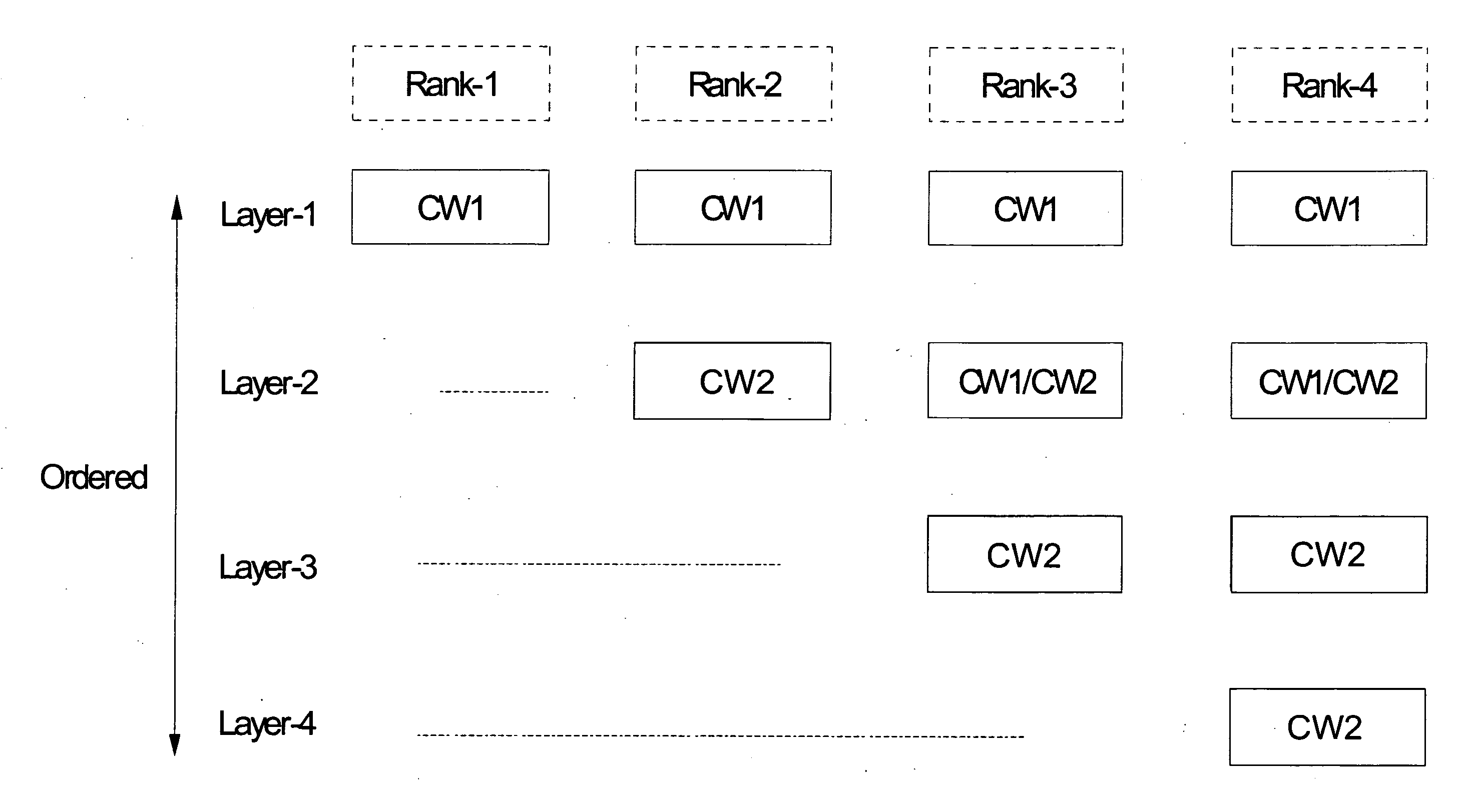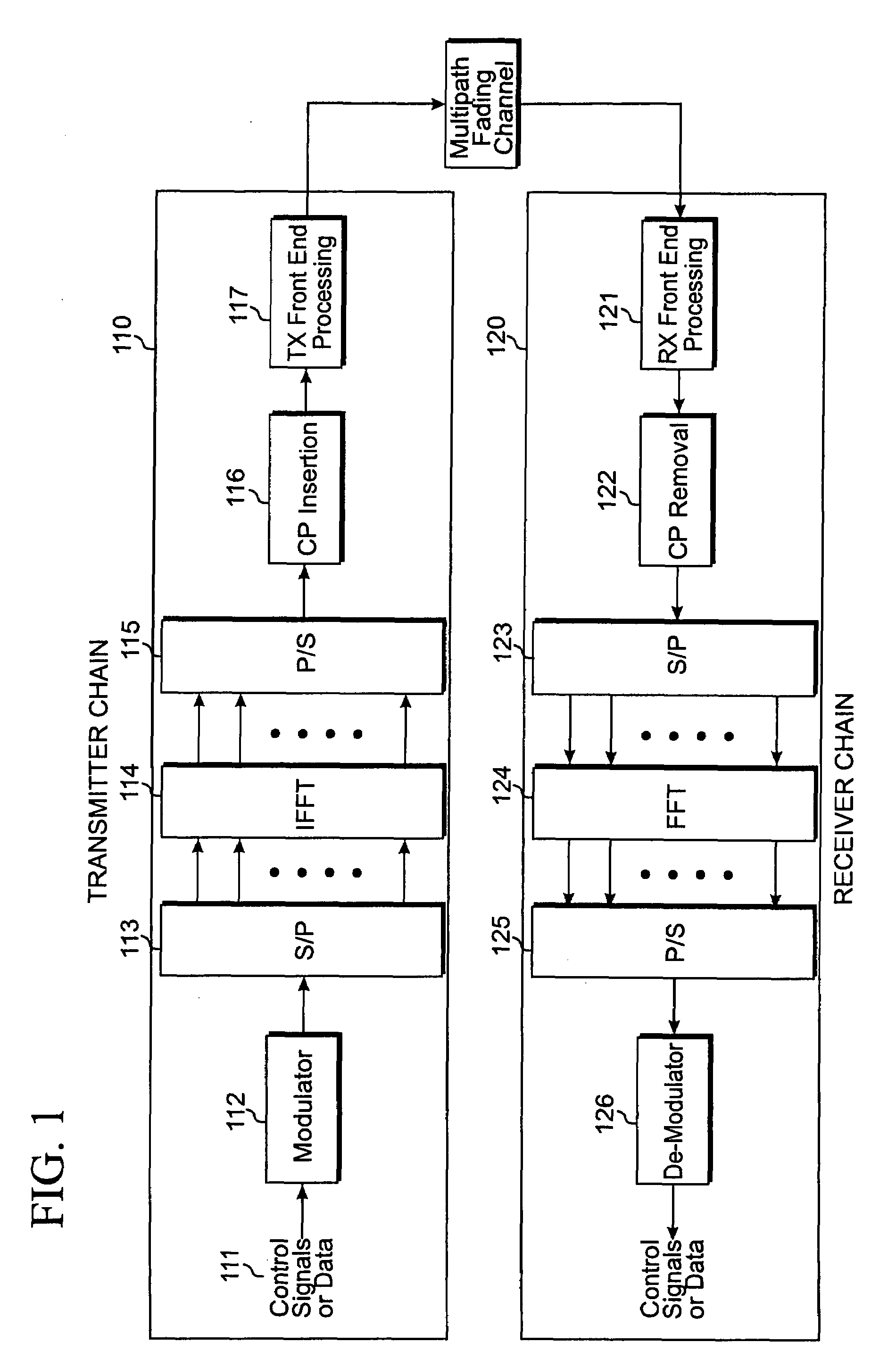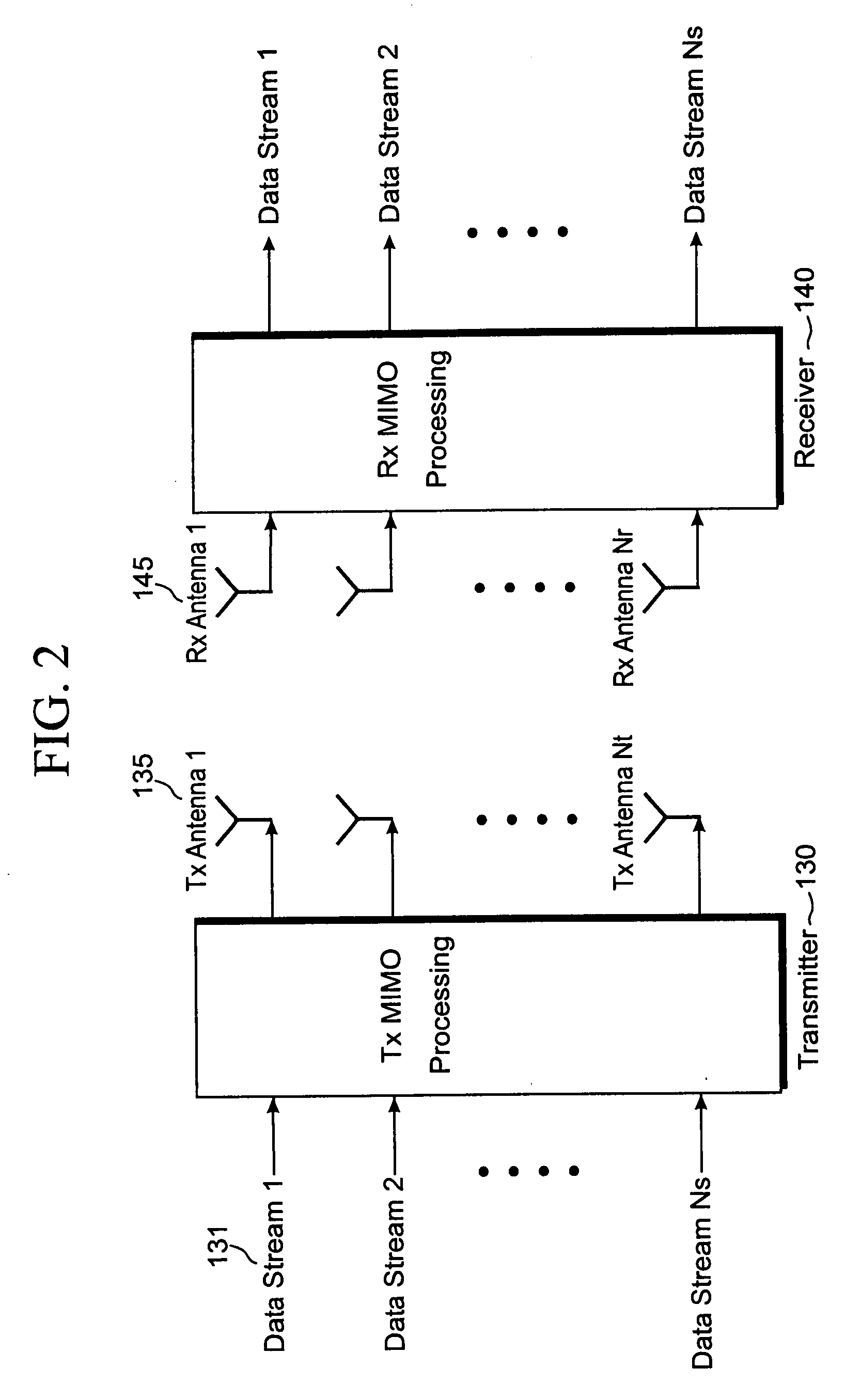MIMO control signaling in a wireless communication system
a wireless communication system and control signal technology, applied in the direction of multi-channel communication, digital transmission, transmitted data organisation to avoid errors, etc., can solve problems such as inefficient use of system resources
- Summary
- Abstract
- Description
- Claims
- Application Information
AI Technical Summary
Benefits of technology
Problems solved by technology
Method used
Image
Examples
first embodiment
[0045]FIG. 9 shows a flow chart of a process of decoding control signal by a user equipment (UE) using either Format I or Format II as a first embodiment according to the principles of the present invention. At step S310, the UE receives a data signal and a control signal. At step S311, the UE attempts to decode the control signal using Format I. At step S312, the UE determines whether the decoding performed at step S311 is performed successfully. If the decoding is performed successfully, the UE processes the data signal by assuming that the data is transmitted using a single codeword transmission at step S314. If the decoding is performed unsuccessfully, the UE attempts to decode the control signal using Format II at step S313. At step S315, the UE determines whether the decoding performed at step S313 is performed successfully. If the decoding is performed successfully, the UE processes the data signal by assuming that the data is transmitted using a two codewords transmission at...
second embodiment
[0046]In a second embodiment according to the principles of the present invention, the UEs expecting rank-1 transmission only decode Format I as shown in FIG. 10A. This can be achieved by limiting the maximum MIMO rank to I for certain UEs in the system. This information can be exchanged by using higher level signaling, for example, at the time of session set-up. Similarly, it is also possible to set the rank to greater than 1 for certain UEs. These UEs then always try to decode the PDCCH using Format II. In case where Node-B (i.e., the base station) can reduce the MIMO transmission rank, the UEs with rank greater than 1 need to decode PDCCH assuming both Format I and Format II as shown in FIG. 10B.
[0047]As shown in FIG. 10A, at step S410, the UE with MIMO transmission rank-1 receives a data signal and a control signal. At step S411, the UE attempts to decode the control signal using Format I. At step S412, the UE determines whether the decoding in step S411 is performed successfull...
fourth embodiment
[0050]In a fourth embodiment according to the principles of the present invention as shown in FIG. 12, the control signal using Format II uses a higher order modulation and lower code rate than the control signal using Format I. That is, the control signal using Format II uses 16-QAM modulation, which is higher than the QPSK modulation used by the control signal using Format I. In addition, the control signal using Format II is coded using a code rate of ⅜ while the control signal using Format I is coded using a code rate of ½. Again, both formats use the same amount of physical resources, that is, the same amount of subcarriers or modulation symbols for transmission.
PUM
 Login to View More
Login to View More Abstract
Description
Claims
Application Information
 Login to View More
Login to View More - R&D
- Intellectual Property
- Life Sciences
- Materials
- Tech Scout
- Unparalleled Data Quality
- Higher Quality Content
- 60% Fewer Hallucinations
Browse by: Latest US Patents, China's latest patents, Technical Efficacy Thesaurus, Application Domain, Technology Topic, Popular Technical Reports.
© 2025 PatSnap. All rights reserved.Legal|Privacy policy|Modern Slavery Act Transparency Statement|Sitemap|About US| Contact US: help@patsnap.com



